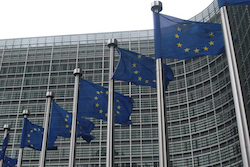Europe is keen to gain back the ground lost to Asia and the United States during the LTE generation, with the European Union joining telcos in developing the road to 5G.
The continent’s appetite for the battle was questioned by Ericsson’s CTO at Mobile World Congress in February, when he claimed not enough was being done.
The EU’s Horizon 2020 initiative is an attempt to show that Ulf Ewaldsson’s claims were incorrect. It is funding 19 projects across the continent, tasked with 5G research. Selfnet is one of these, with 12 teams of researchers seeking to develop self-organising networks, through a mix of software defined networking, network functions virtualisation, cloud computing and artificial intelligence.
As Jose Alcaraz Calero, from the University of West Scotland that forms part of Selfnet, explains: “Current 4G technology is a really great standard and used at a global scale but there are limitations that need to be addressed.”
Selfnet is tasked with dealing with these limitations, namely latency, coverage and bandwidth. Calero says Phase One of the project deals with prototyping new types of technology. He cites how consumers of the future will want to be able to stream 4K video while travelling on high-speed trains, a desire that hides considerable challenges when it comes to handover. He says: “There is a significant amount of intelligence required in the network. Packets need to be ready at the next antenna.”
Other use cases of the technology will be familiar to anyone involved in the telecoms industry in recent years. Calero cites mobile healthcare, self-driving cars, high-demand HD video streaming and “self-healing” networks that can predict peaks in demand in advance.
However, where Selfnet differs from forthcoming 5G networks is that it is effectively starting from scratch, using hardware from the likes of Dell, HP and Rackspace.
Operators don’t have that luxury and Calero says this is one of the biggest challenges facing operators in the shift from LTE.
He says: “The issue of legacy architecture is really significant. We have had some heated discussions about it. There needs to be a trade-off. If you rely on what is in place to minimise adoption [of new technologies] then you will compromise on innovation.”
Selfnet overwhelmingly comprises universities although Calero says they have been in talks with vendors about the way forward. However, he describes these talks as “political” as vendors obviously have their own agenda, namely placing their technology at the heart of any future networks.
He says: “Over the past year, we have been having meetings with vendors to make sure our work moves in the same direction as their requirements. Some vendors would push a specific product and way of doing things.”
Attention will soon turn to Phase Two of the three-year project, which will focus on standardisation. As a 5GPPP member, Selfnet will play a key role in this. The stakes are high for a unified 5G standard. As Deutsche Telekom’s Bruno Jacobfeuerborn has noted, fragmentation would be highly damaging for the mobile industry.
Calero agrees, adding that all telco partners working on 5G need to ensure future technologies will be interoperable. However, he warns: “We need to make sure the standardisation process does not hamper innovation.”
We’ll see in three years whether Selfnet has done enough to help Europe catch up.


